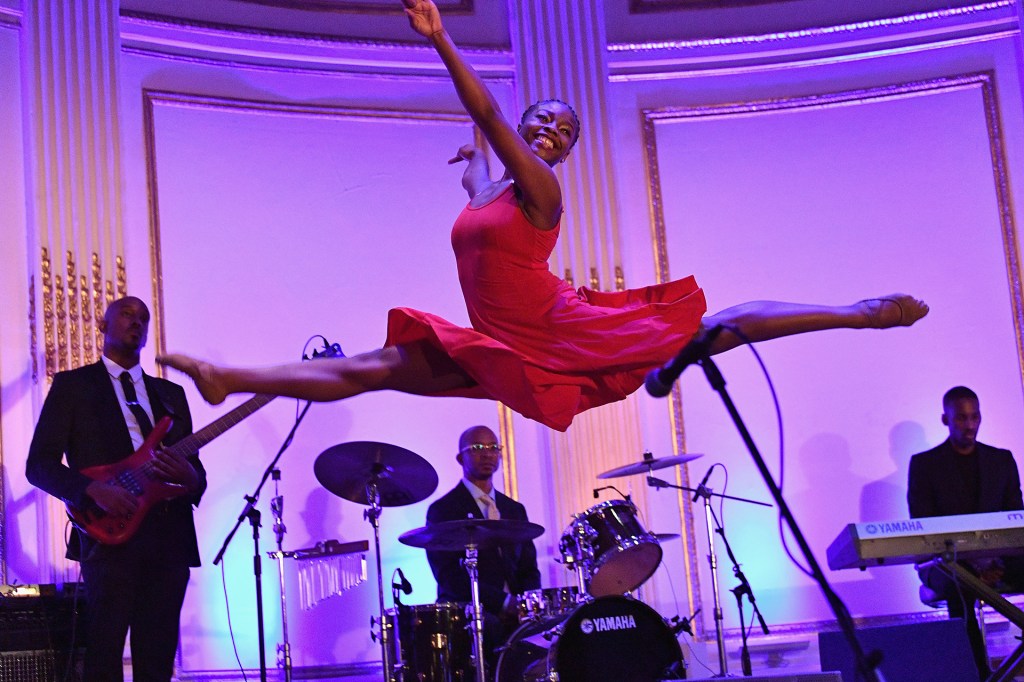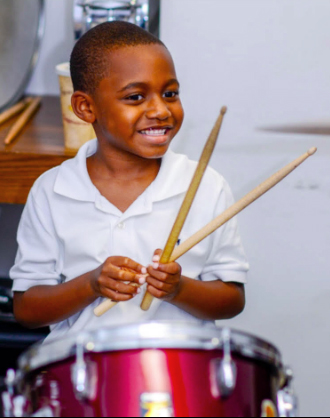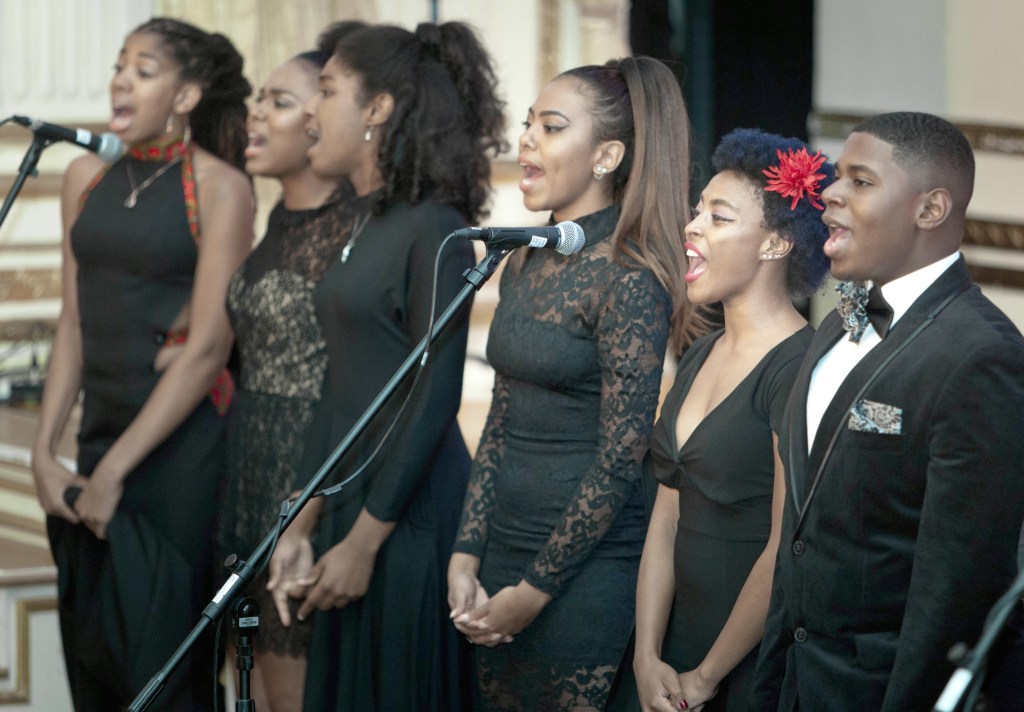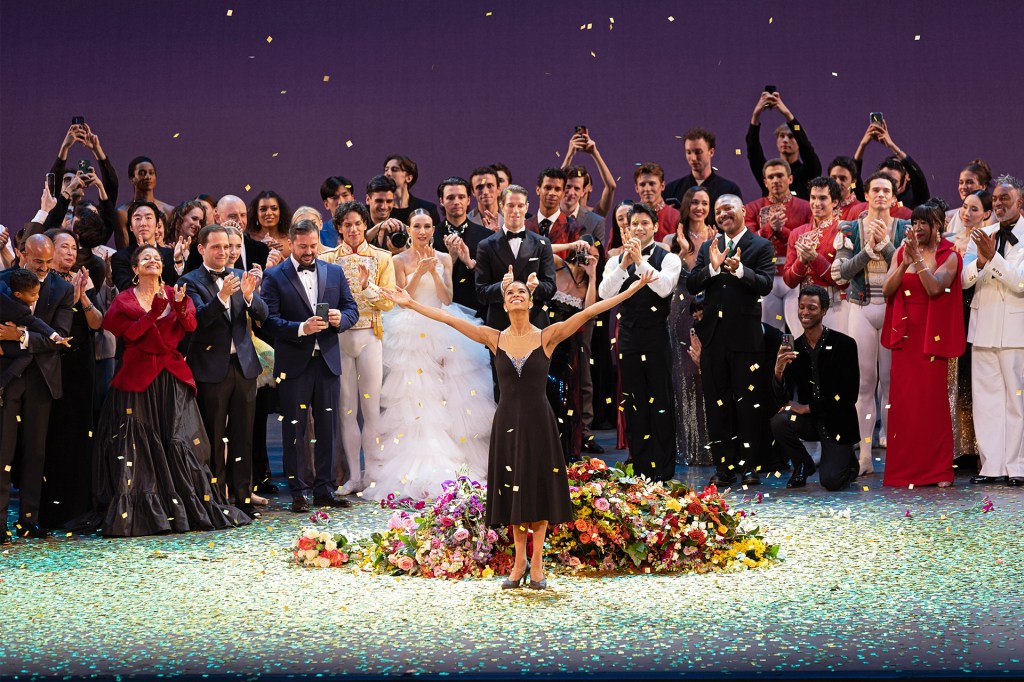
Jayden Hairston was frustrated. More than anything in the world, he wanted to learn how to sing. His elementary school in Yonkers—just north of New York City—didn’t offer the music instruction he needed. So he begged his parents to sign him up for after-school lessons.
Jayden’s mom, Nicole Stansbury, wanted to help her son follow his passion. Ever since she could remember, he had been singing and dancing for family and friends. But private lessons were too expensive. “I didn’t know where to start to put that together for him,” she told TIME for Kids.
Jayden, then 6 years old, knew exactly what to do. He took out his iPad. Then he began researching after-school arts programs. He soon came across the website for Harlem School of the Arts (HSA), in New York City. There, he could take voice and dance lessons. It was a bit far from Yonkers. But he convinced his parents to take him for a visit.
That was three years ago. Now Jayden is one of HSA’s most active students. He takes singing, dancing, or theater lessons almost every day after school. Last year, he performed in seven productions. “He found the perfect place for himself,” Stansbury says. Jayden agrees. “When I’m at HSA, I don’t want to leave,” he says. “It’s made me more confident. I feel better about myself.”

Jayden plays drums at the Harlem School of the Arts, in New York City, in 2015. He was in first grade when he joined HSA.
STEVE SCHNURFunding the Arts
Like Jayden, students in many communities across the United States have limited access to arts instruction in schools. That’s according to a 2012 report by the National Center for Education Statistics. HSA is one of many nonprofit groups that bridges this gap by offering affordable arts classes. Groups like HSA are funded by donations and state grants. Many also receive money from the federal government’s National Endowment for the Arts.
The NEA was established in 1965. Its goal is to promote access to the arts for all Americans. Some people, however, believe it’s not the responsibility of the federal government to provide arts funding. President Donald Trump’s 2019 budget proposal calls on Congress to reduce NEA funding and eventually eliminate the agency. The Trump administration argues that “private and other public sources” already provide funding for the arts. Congress has yet to make a decision.
Advocates for arts education say cutting the NEA is a bad idea. It could leave many children unable to participate in the arts. That’s because 40% of the agency’s grants go to high-poverty neighborhoods.
Kate Wolff works for a nonprofit called the Arts Education Partnership. She says that arts instruction helps kids succeed in school. “Arts-based instruction has been shown to not only directly affect students’ academic success,” she told TFK, “but also [to improve their] deeper learning skills.”

Aiyana Smash, 18, performs during HSA’s Masquerade Fall Benefit Gala on October 23, 2017, at the Plaza Hotel, in New York City. Smash joined HSA when she was 8 years old, and has studied dance, music, and acting there.
LINA MAI FOR TIME FOR KIDSBeyond Academics
Research out of Harvard University has offered a different perspective on the value of arts education. A study published in 2000 found that it does not raise student achievement in math and English language arts. However, study coauthor Ellen Winner says that doesn’t mean arts education isn’t valuable.
“The arts train a very different set of thinking skills from those measured by test scores,” Winner told TFK. She argues that arts education offers a path for children who may not be strong in academics. Without it, she says, “they might never discover their strength and passion and possibly [their] future career.”
Jayden Hairston knows this firsthand. He says Harlem School of the Arts has motivated him to go after his professional goals. These include singing, dancing, and acting. “I need HSA,” he says, “to help me to get where I need to go.”













